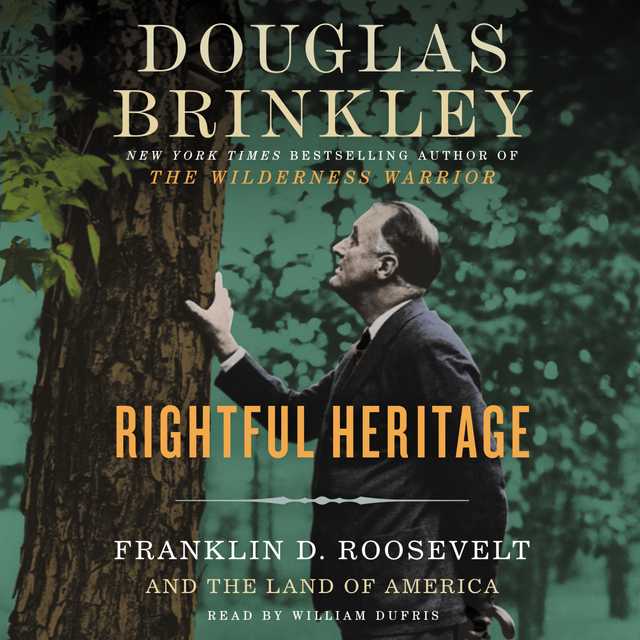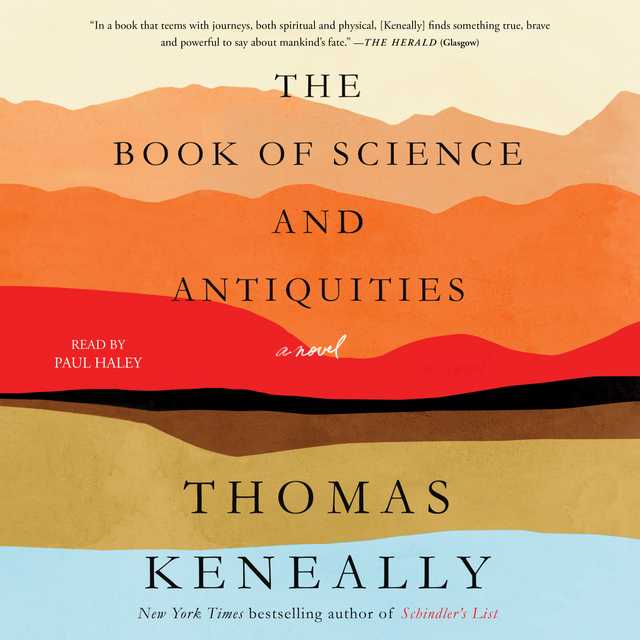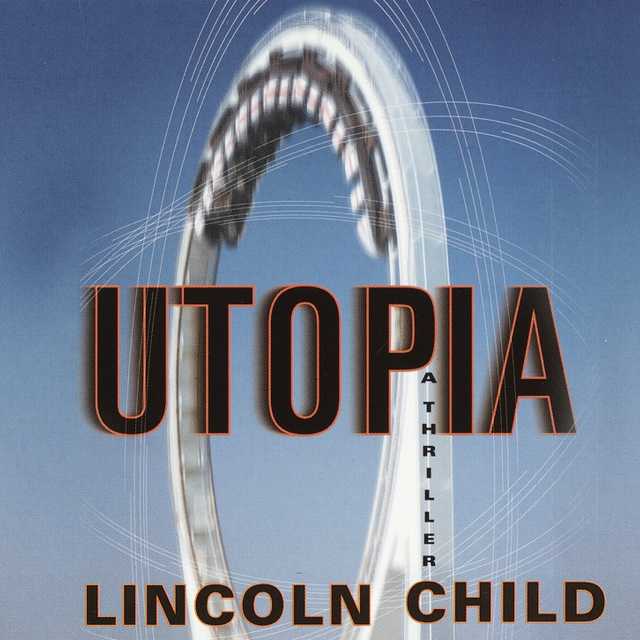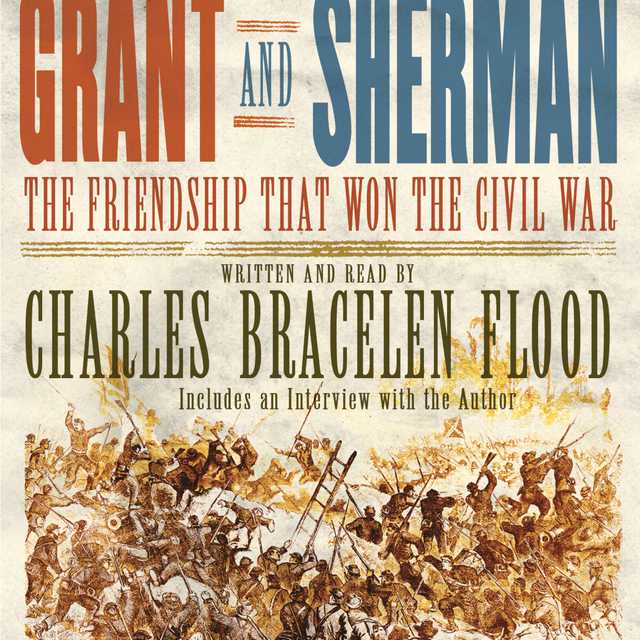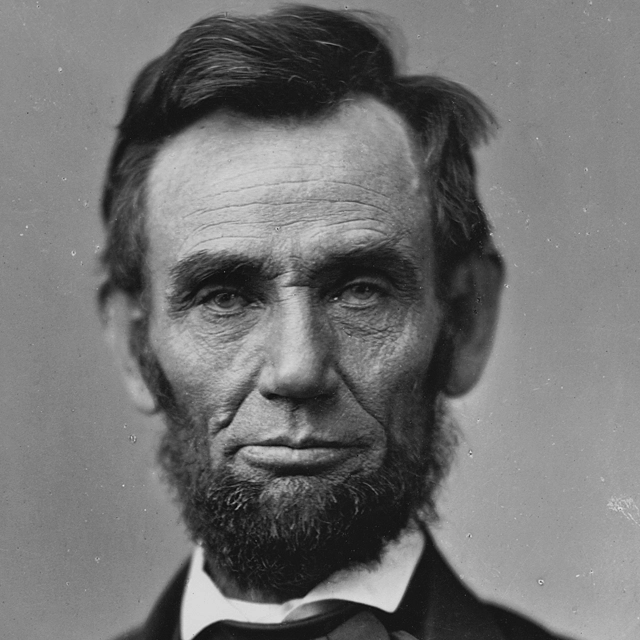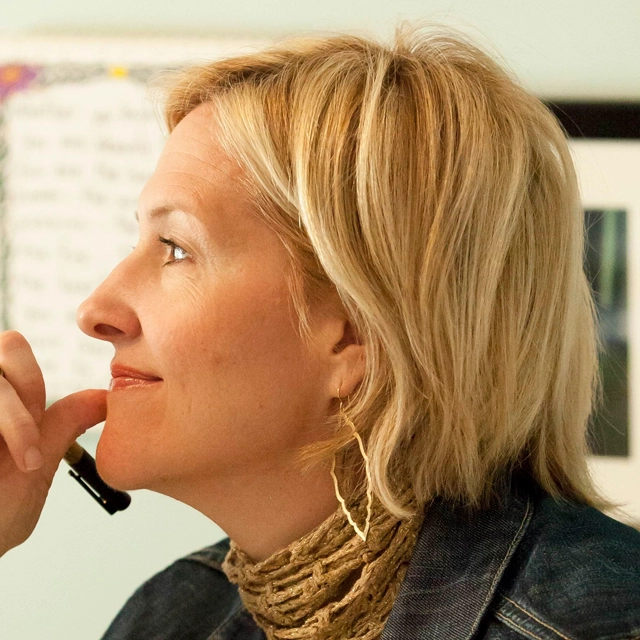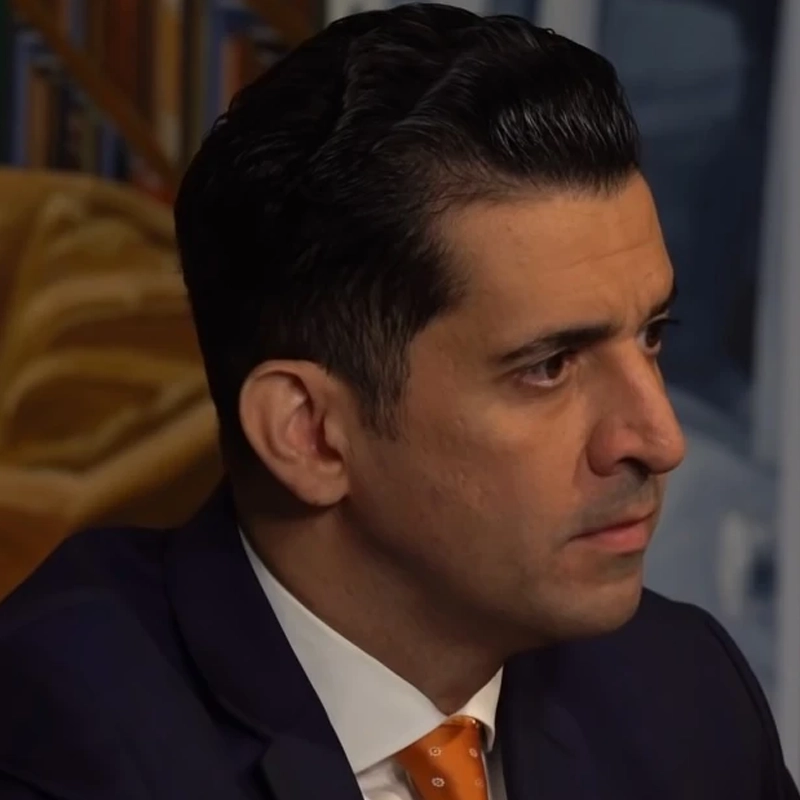Rightful Heritage Audiobook Summary
The acclaimed, award-winning historian–“America’s new past master” (Chicago Tribune)–examines the environmental legacy of FDR and the New Deal.
Douglas Brinkley’s The Wilderness Warrior celebrated Theodore Roosevelt’s spirit of outdoor exploration and bold vision to protect 234 million acres of wild America. Now, in Rightful Heritage, Brinkley turns his attention to the other indefatigable environmental leader–Teddy’s distant cousin, Franklin Delano Roosevelt, chronicling his essential yet under-sung legacy as the founder of the Civilian Conservation Corps (CCC) and premier protector of America’s public lands. FDR built from scratch dozens of State Park systems and scenic roadways. Pristine landscapes such as the Great Smokies, the Everglades, Joshua Tree, the Olympics, Big Bend, Channel Islands, Mammoth Cave, and the slickrock wilderness of Utah were forever saved by his leadership.
Brinkley traces FDR’s love for the natural world from his youth exploring the Hudson River Valley and bird watching. As America’s president from 1933 to 1945, Roosevelt–consummate political strategist–established hundreds of federal migratory bird refuges and spearheaded the modern endangered species movement. He brilliantly positioned his conservation goals as economic policy to combat the severe unemployment of the Great Depression. During its nine-year existence, the CCC put nearly three million young men to work on conservation projects–including building trails in the national parks, pollution control, land restoration to combat the Dust Bowl, and planting over two billion trees.
Rightful Heritage is an epic chronicle that is both an irresistible portrait of FDR’s unrivaled passion and drive, and an indispensable analysis that skillfully illuminates the tension between business and nature–exploiting our natural resources and conserving them. Within the narrative are brilliant capsule biographies of such environmental warriors as Eleanor Roosevelt, Harold Ickes, and Rosalie Edge. Rightful Heritage is essential reading for everyone seeking to preserve our treasured landscapes as an American birthright.
Other Top Audiobooks
Rightful Heritage Audiobook Narrator
William Dufris is the narrator of Rightful Heritage audiobook that was written by Douglas Brinkley
Douglas Brinkley is the Katherine Tsanoff Brown Chair in Humanities and Professor of History at Rice University, presidential historian for the New-York Historical Society, trustee of the Franklin D. Roosevelt Presidential Library, and a contributing editor at Vanity Fair. The Chicago Tribune dubbed him “America’s New Past Master.” He is the recipient of such distinguished environmental leadership prizes as the Frances K. Hutchison Medal (Garden Club of America), Robin W. Winks Award for Enhancing Public Understanding of National Parks (National Parks Conservation Association), and the U.S. Fish and Wildlife Service’s Lifetime Heritage Award. His book The Great Deluge: Hurricane Katrina, New Orleans, and the Mississippi Gulf Coast received the Robert F. Kennedy Book Award. He was awarded a Grammy for Presidential Suite and is the recipient of seven honorary doctorates in American studies. His two-volume, annotated Nixon Tapes recently won the Arthur S. Link-Warren F. Kuehl Prize. He lives in Austin, Texas, with his wife and three children.
About the Author(s) of Rightful Heritage
Douglas Brinkley is the author of Rightful Heritage
More From the Same
- Author : Douglas Brinkley
- The Great Deluge
- Parish Priest
- American Heritage History of the United States
- The Quiet World
- Rosa Parks
- Publisher : HarperAudio
- Abraham
- American Gods [TV Tie-In]
- Dead Ringer
- House of Sand and Fog
- Prey
Rightful Heritage Full Details
| Narrator | William Dufris |
| Length | 22 hours 49 minutes |
| Author | Douglas Brinkley |
| Publisher | HarperAudio |
| Release date | March 15, 2016 |
| ISBN | 9780062445285 |
Additional info
The publisher of the Rightful Heritage is HarperAudio. The imprint is HarperAudio. It is supplied by HarperAudio. The ISBN-13 is 9780062445285.
Global Availability
This book is only available in the United States.
Goodreads Reviews
Andrew
May 28, 2019
Rightful Heritage is the companion book to Wilderness Warrior, a work by historian Douglas Brinkley which focused on the groundbreaking efforts by Theodore Roosevelt to protect his country's natural environment from commercial encroachment. Wilderness Warrior was a superb book, but it is perhaps overshadowed by this outstandingly well-researched masterpiece. Rightful Heritage focuses on the conservation work done by Franklin Roosevelt, efforts primarily undertaken during his (many) years in the White House. It utilizes voluminous research on Brinkley's part (and, given his schedule, most likely by hordes of researchers as well) to show how much he valued saving the forests, lakes, streams, coastlines, and open lands of the United States. One cannot read Rightful Heritage and fail to come away recognizing how much of a priority environmentalism truly was for the thirty-second president. Everyday citizens played major roles in bringing about change from the bottom up. The protection of the Joshua trees in southern California resulted in what is today Joshua Tree National Park, but it was the efforts of socialite Minerva Hamilton Hoyte in bringing the issue of their protection to the forefront of conversation was detailed by Brinkley.From the Joshua trees to the Dry Tortugas off the coast of Key West, FDR's attempts to focus on nature during the worst of the Great Depression were downright admirable. He even one-upped his own cousin and the former president in just how far he went to protect vital habitats. The bureaucratic wrangling over protecting the Florida Everglades from any sort of development made clear the sort of resistance efforts to maintain nature often faced.Harold Ickes plays a major supporting role throughout the book. An activist Secretary of the Interior, he is constantly butting heads with Secretary of Agriculture-and, like himself, defected former Republican and New Deal acolyte-Henry Wallace over which conservative efforts to emphasize and how to go about emphasizing them. If each of these men are vital supporting actors, the Civilian Conservation Corps essentially joints FDR as the story's primary protagonist. Despite constant Congressional efforts to gut its funding, the number of national parks improved and the sheer number of trees planted by the CCC-not to mention the number of otherwise unemployed men put to work by it-underscore how much good it did during the 1930s and early 1940s. Although their work began in Virginia, the transformation of Western states was where the CCC made its major mark. Their role in constructing Red Rocks Ampitheater in Morrison, Colorado, showed just how diverse their contribution to America's outdoor recreation really was. They were hard at work in places like Rocky Mountain National Park, building roads and improving the park's infrastructure. Perhaps no state received more per capita CCC investment than struggling Utah. The setting aside of of Capital Reef, Zion, and Cedar Breaks National Monuments in that state helped to make possible its present day attraction as an outdoor enthusiasts's paradise. The coming of an organization along the lines of the CCC was previewed during FDR's time as governor of New York. As part of the Temporary Emergency Relief Administration (TERA)-a preview as well of coming attractions when it came to New Deal related acronyms-the future president put employed New Yorkers to work planting trees. FDR's desire to beautify both his "southern" home in Warm Springs, Georgia, as well as his "northern" getaway spot at Hyde Park, New York, are included on several occasions. Brinkley does this to show readers how his crusade was merely an extension of the passions he held for conserving things far away from, as well as close to, home. His extensive knowledge of fish, birds, and various aspects of nature dovetail with this idea that his efforts were truly from the heart and stemmed from a dedication he was willing to personally devote time and energy to.There are aspects of FDR's policies which receive criticism. The vast number of dams constructed during the Great Depression were zeroed in on due to the fact that they also carried with them destructive effects toward water wildlife. There was controversy over road building at national parks as well. While it meant more people would visit thanks to the ease of movement which it allowed for-particularly for those disabled like FDR-many were concerned about the automobiles it brought into the parks and the possible cheapening of the "real" outdoor experience it engendered. This book is a valuable historical work and is full of what feels like countless interesting conservation-based stories and anecdotes. One such anecdote took place in 1941 and involved Roosevelt asking Secretary of War Henry Stimson to find a new location for the 10th Mountain Division's ski troopers to train. According to Irving Brant, the spot they had selected near Henry Lake, Utah, was "the solitary unprotected point" between Yellowstone and Rock Lakes for trumpeter swans; therefore, even with possible United States war involvement with the Axis Powers brewing, the War Department was forced to relocate to Camp Hale in Colorado. Tales like this make FDR's hard nosed and determined approach to conservationism clear. Americans would do well to read it and understand that, despite a depression and impending war, the country had a leader who was willing to prioritize the long haul over the short term. The call to service and visionary aspect inherent in organizations like the CCC and the broader effort to protect the United States' environment show positive aspects of the American spirit. The Soil Erosion Service (an organization created at Franklin Roosevelt's request in September 1933) was headed by soil scientist/guru Hugh Bennett, and it was from this researcher that perhaps the quote best summing up Rightful Heritage comes. He observed, "The plain truth is that Americans as people have never learned t love the land and regard it as an enduring resource. They have seen it only as a field for exploitation and a source of immediate financial return." It is by reading this work that readers can see Brinkley's hope that FDR's legacy will be rekindled by a new generation of Americans eager to prioritize conservation over the desire for short term gain and long term degradation of resources. -Andrew Canfield Denver, Colorado
Gilda
September 26, 2017
FDR has long been a hero of mine. Seeing us through the Depression, leading us through most of World War II, I can’t think of any other president who had so much placed on his shoulders. That well may be why most books written about him don’t go into a great deal of depth regarding a third problem he inherited, the desecration of much of America’s environment. Forests had been indiscriminately chopped down, rivers polluted, species hunted to extinction. But here is presented all FDR did to heal America’s battered landscape. In bringing all this information to light, this book has manage to make me admire him even more. Just for that, it deserves five stars.Along with having over a million trees planted, FDR established grasslands, hundreds of national parks and forests, desertscapes and wetlands, and wildlife refuges. He did more to protect America’s coastlines, marine sanctuaries, and barrier islands than all of his White House predecessors combined. His executive orders and presidential proclamations protected 700 species of birds, 220 species of mammals, 250 varieties of reptiles and amphibians, more than 1,000 types of fish, and an uncountable numbed of invertebrates and plants.Still more, by creating the Civilian Conservation Corps, he created millions of jobs for those desperately in need of work. The CCC was responsible for miles of roads laid, the building of recreation rooms at state parks, libraries in remote counties, lookout towers, thousands of miles of telephone line strung, and historical sites restored.FDR deserves such high marks for much: forests, wildlife protection, park management, both state and national, and soil conservation. But there were some missteps. The many dams he had built devastated numerous riverine ecosystems. But that was done in ignorance. I’m sure that, if he had known the damage that would be done, he never would have ordered them to be built.On a more personal note, the CCC created two parks in the Phoenix area where I spent many happy moments: Papago Park and South Mountain Park, which, at 16,000 acres, is the largest city park in the US. Last, but not least, they built the high school I attended.
Carole
March 28, 2016
When we think of FDR, many things come to mind, least of which is as a conservationist, a staunch protector of our national treasures….animal wildlife, waterways, trees, forests. That normally is associated with TR. Yet in this outstanding, more than 700 pg. , exactingly researched book, Douglas Brinkley delves into the details of FDR’s astounding environmental accomplishments, many under the banner of the CCC, which not only created and protected our public lands, but provided work for young people during the Depression. Just for openers, think: The Great Smokies, Everglades, Channel Islands, Utah Wilderness, Big Bend Nat’l Parks, dozens of State Parks, Mammoth Cave, the building of trails in our national parks, attempts at pollution control, and the remarkable planting of more than 3 billion trees. Despite the many titles that Roosevelt held, he listed his occupation as “tree farmer”. It had its genesis in his Hyde Park/Hudson River Valley childhood, which to the end of his days was the place he held most dear. Despite the fact that I've visited Hyde Park numerous times, because of Rightful Heritage I want to return, this time to view it from the standpoint of FDR's environmental impact.
Nick
May 16, 2017
In-depth, well-written, and deeply interesting, this history feels like a biography of FDR. It's amazing to imagine what is possible in the future given what FDR and his allies were able to accomplish in the past. Some of it--3 billion trees planted by the Civilian Conservation Corps; animal and bird species saved from extinction; families fed through purposeful labor; a president in love with the literal soil and rocks and water of the nation--is unbelievable.
Jackie
June 01, 2019
I highly recommend this book, but you must have the time to absorb all the wonderful accomplishments that President Franklin D. Roosevelt did. He was an amazing leader and environmentalist. If it wasn't for him, we would not see The State and National Park Systems as we do today.
Josh
April 24, 2020
A few quotes:"When Ohio was first opened for settlement, in 1783, about 95 percent of its more than 26 million acres were blanketed with forests. As Roosevelt took to the platform to speak at the Cleveland Public Auditorium in early November 1940, only three million forested acres remained. The CCC reforested hilly sections of the Cuyahoga Valley, built bridges, and dammed Salt Run to create Kendall Lake (all or partof what became Cuyahoga National Park in 1974). But even with the CCC's intense efforts, Ohio's existing forests were being cut over at a rate three times higher than the rate at which they were growing. "I see an America," Roosevelt told a cheering crowd in Cleveland just before Election Day, "whose rivers and valleys and lakes-hills and streams and plains- the mountains over our land and nature's wealth deep under the earth- are protected as the rightful heritage of all the people.""In 1940, one particularly onerous problem the CCC faced in Ohio was trying to save the Cuyahoga River, which had caught fire multiple times. The hundred-mile-long river, which flows through Akron and Cleveland before emptying into Lake Erie, had long since been ruined by industry. Ohioans had dumped so much effluent and debris into the Cuyahoga that the river emanated a rank odor even when it was frozen in the winter."---"A phenomenal era in conservation had ended. From 1933 to 1942, the CCC had enrolled more than 3.4 million men to work in thousands of camps across America. Roosevelt had used the CCC as an instrument for both environmentalism and economic revitalization. Its erosion-control programs alone benefited forty million acres of farmland. The success the agency had in building up American infrastructure is impossible to deny: forty-six thousand bridges; twenty-seven thousand miles of fencing; ten thousand miles of roads and trails; five thousand miles of water-supply lines; and three thousand fire-lookout towers. Credited with establishing 711 state parks, the CCC also restored closes to four thousand historic structures and rehabilitated 3,400 beaches.""Nobody could deny the CCC's enduring legacy from 1933 to 1942: combating deforestation, dust storms, overhunting, water pollution, and flooding. In this way, the New Deal conservation revolution had already made a difference. Even while American troops were fighting in Europe and the Pacific, back home American lands brimmed with native grasses and cottonwoods, desert oases and high-country evergreens. The American land was healing and, in some regions, thriving. Around three billion trees had been planted by "the boys."---"It is disturbing," Eleanor Roosevelt would later write about the Jackson Hole fight of the 1940s, "to find how little real enthusiasm there seems to be among our people for the preservation of our national parks.""Throughout the 1944 campaign, Roosevelt proudly invoked the conservation accomplishments of the New Deal. One-third of America was covered in forestlands. Over 180 million acres of woodlands in forty states were part of the national forest system: enough commercial forests left to maintain maximum sustained yield to win World War II. Furthermore, in 1935, there had been fewer than 30 million waterfowl in America; now there were over 140 million from the Cascades to the Cumberland Plateau, to the Pennsylvania Wilds.""Around the same time that the president was delivering his West Virginia tree sermon, Eleanor Roosevelt visited the Audobon Nature Center in Greenwich, Connecticut, where she expressed the conviction that young people needed education about the natural world to better understand the "interdependence of human kind-the animals, the oceans, the earth, and human beings." ---"Many top echelon New Dealers weren't quite convinced that Truman would be up to the job as president. Ickes feared that Truman would be too easily intimidated by the stockmen associations, the oil lobby, and timber corporations and would fail to establish new national monuments (or enlarge existing ones) in the Colorado Plateau or wildlife refuges in the Gulf South. As Ickes would sneer in 1948, Truman was the kind of pro-business leader who allowed "the oil companies to get away with murder." Ickes, who left office in 1946, was right. The only national monument that Truman established was Effigy Mounds in Iowa. But in 1947 Truman did bring Roosevelt's beloved Everglades fully into the National Park Service.""Well into the twenty-first century, Springwood remained the only place in the United States where a president had been born, grown up, and laid to rest. In a very specific provision in his will, Roosevelt had requested that the over half million trees he planted between 1912 and 1945 be protected in perpetuity. If one of his trees died, then another was to be planted in its place. The National Park Service was tasked with overseeing this program. The pond where Roosevelt swam in his efforts to recover from polio and the hemlock hedge were also carefully preserved. Even the river bluffs across the Hudson would be preserved as a memorial. "My husband's spirit will live in this house, in the library, and in the quiet garden where he wished his body to lie," Eleanor Roosevelt said. "It is his life and his character and his personality which will live with us and which will endure and be imparted to those who come to see the surroundings in which he grew... He would want them to enjoy themselves in these surroundings and to draw from them rest and peace and strength as he did all the days of his life."
Earl
January 30, 2023
Franklin Roosevelt is often overlooked for his conservatism efforts, in this book Douglas Brinkley corrects this in a breathtakingly exhaustive review of FDR's efforts to save America's natural resources, wildlife and along with Harold Ickes's help to expand the National Park Service as well as build up the many state parks. Perhaps the greatest and most underappreciated achievement of The New Deal was the Civilian Conservation Corps (CCC) which put millions of people to work creating parks, roads and ranger stations. The one biggest problem with FDR'S legacy is his creation of many hydroelectric projects including Grand Coulee Dam which often failed to account for the destruction of Native American lands and the fisheries associated with the rivers systems that were dammed. As well as Ickes this book also shines a spotlight on many others who assisted in FDR'S efforts including Irving Brant who went to write the greatest biography of James Madison.
Shawn
July 15, 2019
The author is great at bringing the reader back to the time period of FDR and the conservation efforts of the early 20th century United States.
Gene
July 25, 2019
A fantastic read that covers one of the best Conservationist Presidents of the USA. He used New Deal groups like the CCC to improve State and National Parks, planting millions of trees in over logged areas, and restore some of the Countries beloved historic sites.
Margaret
January 29, 2016
The image of FDR is rarely that of an outdoorsman--his years post-polio and political surroundings belie his background as a committed naturalist from a family of Hudson Valley landowners invested in biology, botany, ornithology, scientific forestry, clean water initiatives and of course, TR's founding of the National Parks. Additionally, a love of hiking, animal observation and preservation of local community use of land for traditional crafts and agriculture were interests that bonded Eleanor and Franklin throughout their relationship in a way I had never considered. The heart of the book is how, once in the Presidency, FDR's experience in conservation in NY played out through the CCC and WPA projects, both employing thousands of people and setting up wildlife sanctuaries, storm barriers, erosion controls and other enduring monuments to the American landscape.
Mike
September 15, 2020
An excellent read, and a fine companion to 'Wilderness Warrior', full of facts and detail without becoming tedious. Only quibble, as others here have noted, is that quite a few simple errors pop up with startling regularity, and prevents this from being a 5-star book. Too many to list, but a couple will suffice: 1) Palm Springs is NOT an "oceanside" city, unless you're comparing it to maybe Laramie or something; and 2) Carole Lombard's plane did not crash in the Desert Bighorn Wildlife Range. Curious, IMHO, that a book of environmental history would have so many errors related to geography. Still, well worth the effort even given its length. Lots of charts demonstrating the fantastically positive influence FDR had on America's natural history.
Amy
September 05, 2020
So, until reading Rightful Heritage, I never realized just how green the Old New Deal was! That's not to say that FDR was perfect - Rightful Heritage is very up front about the points of his policies that actual did severe ecological damage, such as his love affair with dams - but I learned a lot about FDR, his conservation philosophy, how to he used his presidency to pursue it writ large, his successes and his failings. Rightful Heritage was a very informative book, although it was a slog at points, especially toward the end.
Claudia
June 24, 2017
Thick book with very intense history of FDR's conservation efforts over many decades. This is an aspect of his political history (normally focused on his WWII activities) that I was not familiar with. I had no idea that he was so committed to conservation. Like other excellent Brinkley books, each chapter is full of details of the many other leaders who were involved and with many endnotes, photo images, and detailed data of his efforts.
Katie
June 30, 2016
A little encyclopedic sometimes, and I would have liked more context for how these projects were received/what other notions about farming, conservation, etc. were circulating at the time, but all in all an interesting book and a fresh angle on FDR's presidency and the New Deal.
Wayne
October 04, 2022
Book 23 of 2022: Rightful Heritage - Franklin D. Roosevelt and the Land of America (2016, Harper Perennial, 749 p.)“Through political know-how, legislative muscle, and fearlessness in using executive authority, FDR craft a conservation legacy to match or even surpass that of Theodore Roosevelt.” (p. 585)Like Brinkley's earlier tome on FDR's distant cousin Theodore, this book details his influence on public lands conservation, preservation, and policy. It could be considered an environmental biography starting with Franklin’s birth and childhood in Hyde Park, NY and seeing the beginnings of his lifelong obsession with conservation and forestry. Having grown up and lived in the West all of my life, I have heard of FDR’s New Deal “Tree Army”, the Civilian Conservation Corps, and the trails and structures they built at national parks. But their legacy extended to building 46,000 bridges, 27,000 miles of fencing, 10,000 mils of roads, and trails, 5,000 miles of water-supply lines, and 3,000 miles of fire lookouts, as well as establishing over 700 state parks, restoring almost 4,000 historic structures, an rehabilitating 3,4000 beaches (p. 526). Much of this work is still with us on public lands today.But in addition to all that the CCC accomplished as part of Roosevelt’s New Deal, between 1933 and 1945, FDR established hundreds of National Wildlife Refuges, almost 30 national parks and monuments, established and expanded over 100 National Forests, and initiated most of the state parks all Americans enjoy today. He reorganized federal agencies to establish the Bureau of Land Management and the US Fish and Wildlife Service and reorganized the National Park Service so that all Civil War battlefields, all national monuments, and all parks, monuments, and public building in the District of Columbia were managed by said agency.FDR’s conservation legacy is absolutely huge with respect to establishment of state and national parks and their infrastructure, restoration of forests, wetlands, and migratory bird habitats (leading to the proliferation of bird populations, some near extinction), and the environmental education of the American public. At the time of his death, when the United Nations was being established, he wanted to make his conservation ideals international. Yet, for all of this his conservation legacy is marred by his love of dams that radically modified riparian environments, especially of the Colorado and the Columbia. But more than that, his Executive Order 9066 that authorized the internment of Japanese American citizens, an action that the author describes as “a flagrant violation of human rights and morally reprehensible” (p. 523). This racist policy forever dims FDR’s legacy, in my opinion.As with any large research body, the book contains a few minor, but irritating errors: the Snoqualmie and Skokomish tribes are identified as being from Alaska (p. 401) (they are from Washington State); recreational scuba diving was listed as one of the reason FDR designated the Channel Islands as a marine sanctuary in 1938 (p. 422) (scuba was not a commercial viable activity until the invention of the Aqua-Lung regulator in 1942); the original name of Redrock Amphitheater near Denver, Colorado was “Garden of the Gods” and made up of Jurassic sandstone (p. 507) (it was Garden of the Angels and Garden of the Titans; Garden of the Gods is a similar feature near Colorado Springs; the rock is a conglomeratic sandstone of Pennsylvanian age, the Fountain Formation). All in all, however, the book is a worthy “sequel” of the Rooseveltian legacy in public lands policy, conservation, and preservation.HIGHLY recommended.
Most Popular Audiobooks
Frequently asked questions
Listening to audiobooks not only easy, it is also very convenient. You can listen to audiobooks on almost every device. From your laptop to your smart phone or even a smart speaker like Apple HomePod or even Alexa. Here’s how you can get started listening to audiobooks.
- 1. Download your favorite audiobook app such as Speechify.
- 2. Sign up for an account.
- 3. Browse the library for the best audiobooks and select the first one for free
- 4. Download the audiobook file to your device
- 5. Open the Speechify audiobook app and select the audiobook you want to listen to.
- 6. Adjust the playback speed and other settings to your preference.
- 7. Press play and enjoy!
While you can listen to the bestsellers on almost any device, and preferences may vary, generally smart phones are offer the most convenience factor. You could be working out, grocery shopping, or even watching your dog in the dog park on a Saturday morning.
However, most audiobook apps work across multiple devices so you can pick up that riveting new Stephen King book you started at the dog park, back on your laptop when you get back home.
Speechify is one of the best apps for audiobooks. The pricing structure is the most competitive in the market and the app is easy to use. It features the best sellers and award winning authors. Listen to your favorite books or discover new ones and listen to real voice actors read to you. Getting started is easy, the first book is free.
Research showcasing the brain health benefits of reading on a regular basis is wide-ranging and undeniable. However, research comparing the benefits of reading vs listening is much more sparse. According to professor of psychology and author Dr. Kristen Willeumier, though, there is good reason to believe that the reading experience provided by audiobooks offers many of the same brain benefits as reading a physical book.
Audiobooks are recordings of books that are read aloud by a professional voice actor. The recordings are typically available for purchase and download in digital formats such as MP3, WMA, or AAC. They can also be streamed from online services like Speechify, Audible, AppleBooks, or Spotify.
You simply download the app onto your smart phone, create your account, and in Speechify, you can choose your first book, from our vast library of best-sellers and classics, to read for free.
Audiobooks, like real books can add up over time. Here’s where you can listen to audiobooks for free. Speechify let’s you read your first best seller for free. Apart from that, we have a vast selection of free audiobooks that you can enjoy. Get the same rich experience no matter if the book was free or not.
It depends. Yes, there are free audiobooks and paid audiobooks. Speechify offers a blend of both!
It varies. The easiest way depends on a few things. The app and service you use, which device, and platform. Speechify is the easiest way to listen to audiobooks. Downloading the app is quick. It is not a large app and does not eat up space on your iPhone or Android device.
Listening to audiobooks on your smart phone, with Speechify, is the easiest way to listen to audiobooks.

